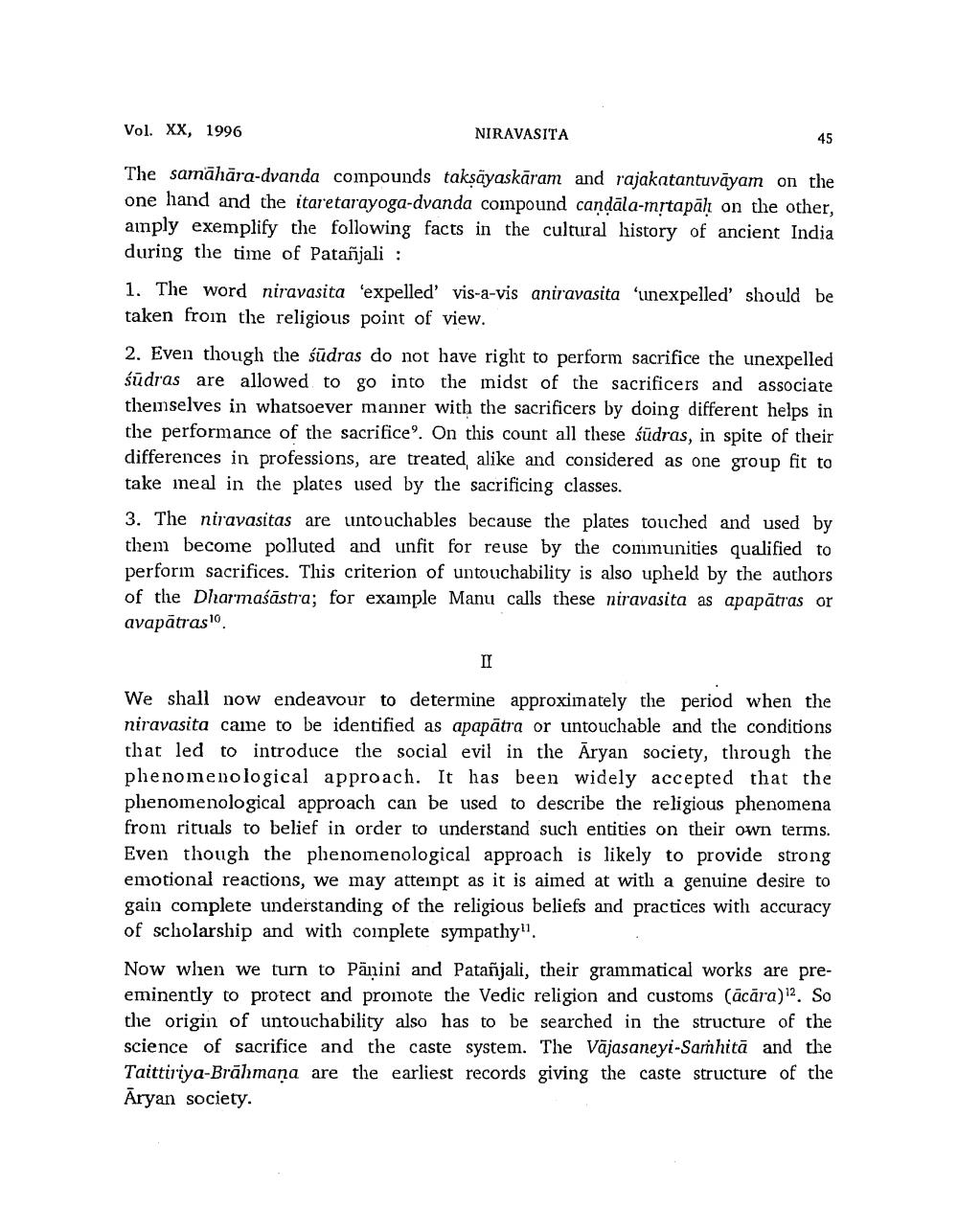________________
Vol. XX, 1996
NIRAVASITA
The samāhāra-dvanda compounds taksāyaskāram and rajakatantuvāyam on the one hand and the itaretarayoga-dvanda compound candāla-mrtapāh on the other, ainply exemplify the following facts in the cultural history of ancient India during the time of Patanjali : 1. The word niravasita 'expelled' vis-a-vis aniravasita "unexpelled' should be taken from the religious point of view. 2. Even though the sūdras do not have right to perform sacrifice the unexpelled śūdras are allowed to go into the midst of the sacrificers and associate themselves in whatsoever manner with the sacrificers by doing different helps in the performance of the sacrifice. On this count all these südras, in spite of their differences in professions, are treated alike and considered as one group fit to take ineal in the plates used by the sacrificing classes. 3. The niravasitas are untouchables because the plates touched and used by them become polluted and unfit for reuse by the cominunities qualified to perform sacrifices. This criterion of untouchability is also upheld by the authors of the Dharmaśāstra; for example Manu calls these niravasita as apapätras or αναράtras10.
We shall now endeavour to determine approximately the period when the niravasita came to be identified as apapātra or untouchable and the conditions that led to introduce the social evil in the Āryan society, through the phenomenological approach. It has been widely accepted that the phenomenological approach can be used to describe the religious phenomena from rituals to belief in order to understand such entities on their own terms. Even though the phenomenological approach is likely to provide strong emotional reactions, we may attempt as it is aimed at with a genuine desire to gain complete understanding of the religious beliefs and practices with accuracy of scholarship and with complete sympathy". Now wlien we turn to Pāņini and Patañjali, their grammatical works are preeminently to protect and promote the Vedic religion and customs (ācāra)2. So the origin of untouchability also has to be searched in the structure of the science of sacrifice and the caste system. The Vājasaneyi-Sarhitā and the Taittiriya-Brāhmaņa are the earliest records giving the caste structure of the Āryan society.




